Reaction lamps
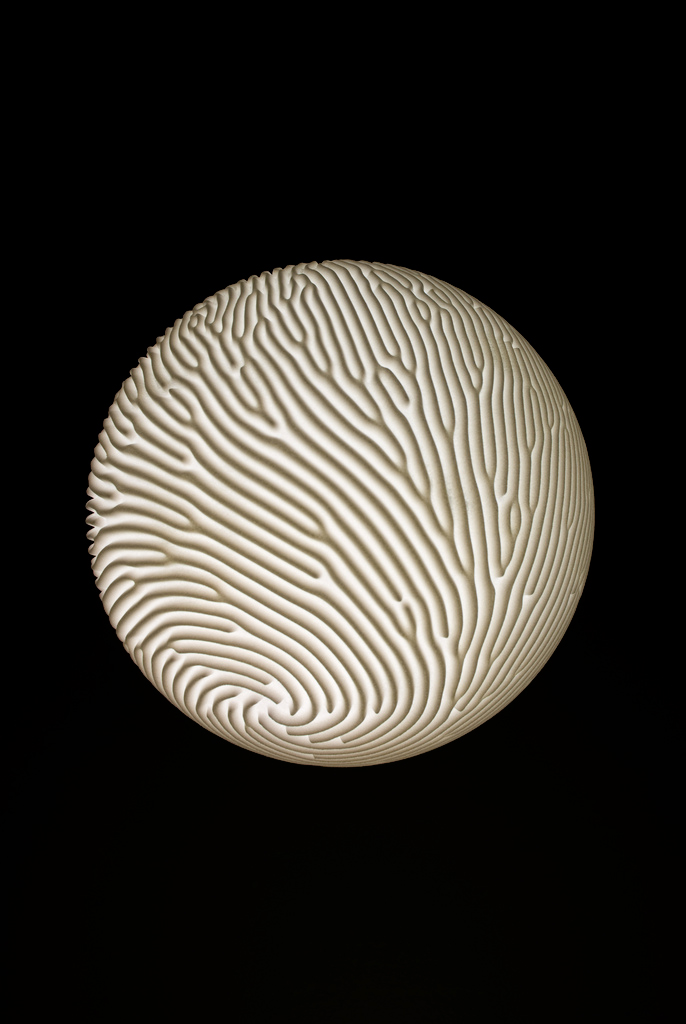
Our new reaction collection includes 3dprinted pendant lamps created by means of Selective Laser Sintering. The Spiral lamp (below) is covered by ridges and valleys that transmit different amounts of light when illuminated; they furnish a striking pattern whether the lamp is on or off. We orchestrated a pattern that twists elegantly towards the base of the lamp where it terminates in a gentle spiral. Lines diverge and converge along the contours of the sphere, blanketing the surface in many deep grooves. We think the pattern recalls the forms of sand dunes and hard corals.
The seed lamps play with reaction-diffusion at different scales to produce an organic effect. A simple sphere grows into a complex sculpted surface by layering reaction patterns at a micro and macro scale. The larger scale pattern creates the overall topography of the lamp while the smaller scale modulates the surface thickness to reveal a cellular texture when lit. In seed#1 (first lamp above), the patterns at both scales are cellular, however the surface is punctured only according to the disposition of the smaller scale. We were inspired by microscopic images of seeds where both the overall shape of the seed and the cells of which it is composed are visible
In seed#2, the macro and micro scale patterns each have a distinct character and they interact to create a pattern of perforations limited to the valleys of its landscape.
The lamps were all generated using software we created in the open source programming environment Processing that simulates reaction-diffusion. The video below shows the generation of two seed lamps.
Reaction-diffusion (RD) has become one of the most canonical examples of complex behavior that emerges from a simple set of rules. RD models a set of substances that are diffusing, or spreading; these substances also react with one another to create new substances. This simple idea has been suggested as a model for a diverse set of biological phenomena. All kinds of animals from fish to zebras display interesting color patterns on their skin and shells which play important roles in their behavior. However, the underlying cause of these patterns is still not understood. In 1952, Alan Turing suggested the RD system as an answer to not only this question but also the more general one of why cells differentiate. How do individual cells locate themselves in the larger scale structure and pattern of an organism? The patterns seen on the animals occur over a scale much larger than a cell, yet they display remarkable self-similarity on every part of the animal’s body.
Turing studied the behavior of a complex system in which two substances interact with each other and diffuse at different rates. He proved mathematically that such a system can form stable periodic patterns even from uniform starting conditions. One of the most interesting things about RD is that you can have a homogeneous system where every cell is doing exactly the same action (for instance just producing a certain amount of some chemicals); but from this one process a large scale structure emerges.
The diagrams below show a simple RD model. There are two substances. One, the activator, increases the synthesis of both itself and another substance, the inhibitor. However, the inhibitor locally inhibits the production of activator. This simple interaction is enough to generate the patterns shown below.


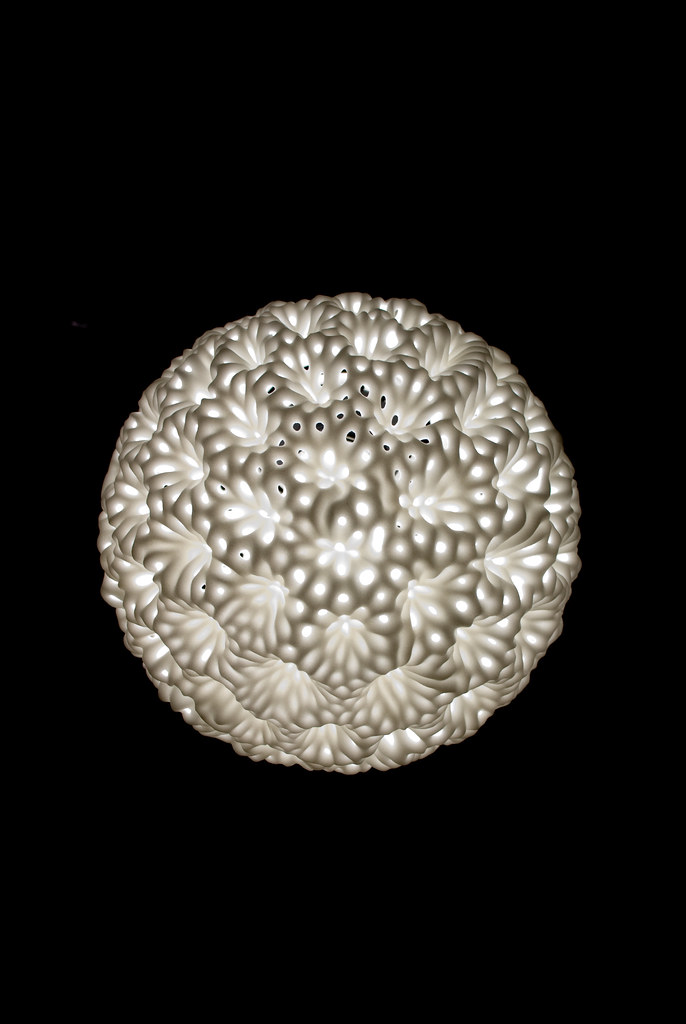
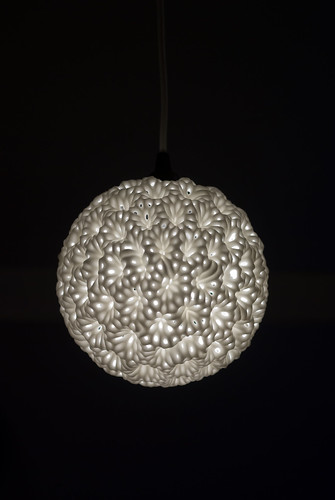


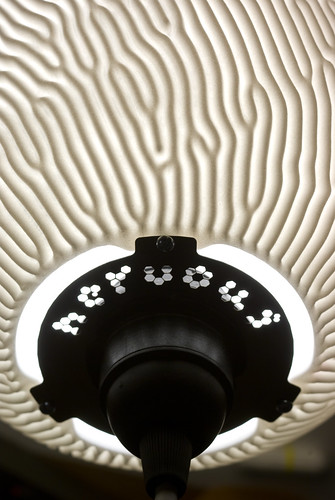
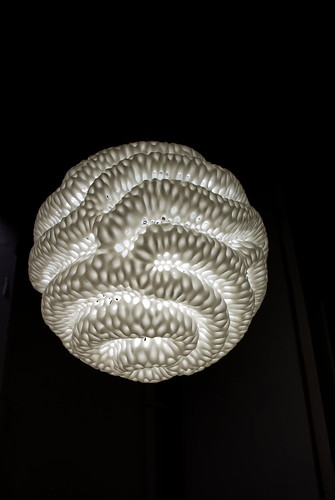

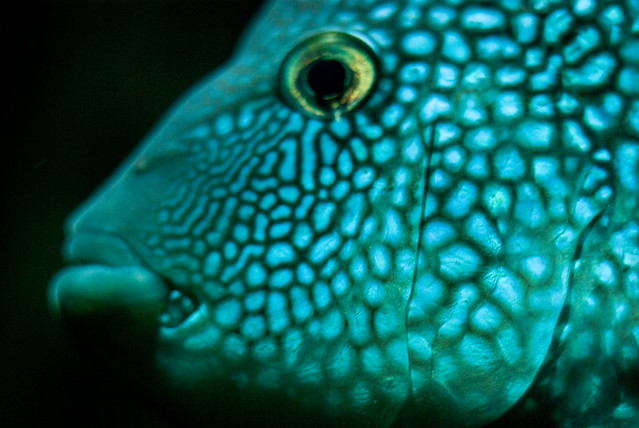
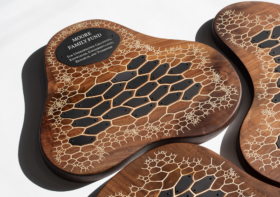
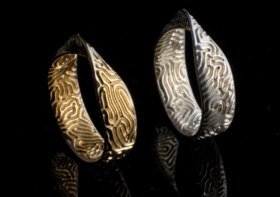
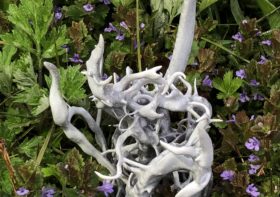
Elena
Amazing patterns, what gorgeous lamps.
Chroma Lab
Fantastic! Congrats, guys!
DMT
v nice. glad to see something came of our conversation.
DMT
beautiful, the effect from varied thickness is better than I imagined.
stand back! i’m about to show you something amazing! «
[…] an overall pattern that is supposedly necessary for the seed coat to have. their blog goes into how reaction-diffusion models influence their designs, and even if you don’t like modeling (like me!) it’s still […]
Raloo
Absolutely stunning designs!
Your works are seriously amazing! Congrats!
Nervous System – explorations in generative design and natural phenomena » Blog Archive » Researcher Profile: Oyvind Hammer
[…] how these patterns form, we came across many competing theories. Hammer is a proponent of a reaction diffusion model. In a paper titled Reaction Diffusion Processes: Application to the Morphogenesis of Ammonoid […]
Nervous System – explorations in generative design and natural phenomena » Blog Archive » BRAIN t-shirts – support Processing.org
[…] shirts feature a drawing of an early sketch of our Seed Lamps created using reaction-diffusion simulations and rendered using […]